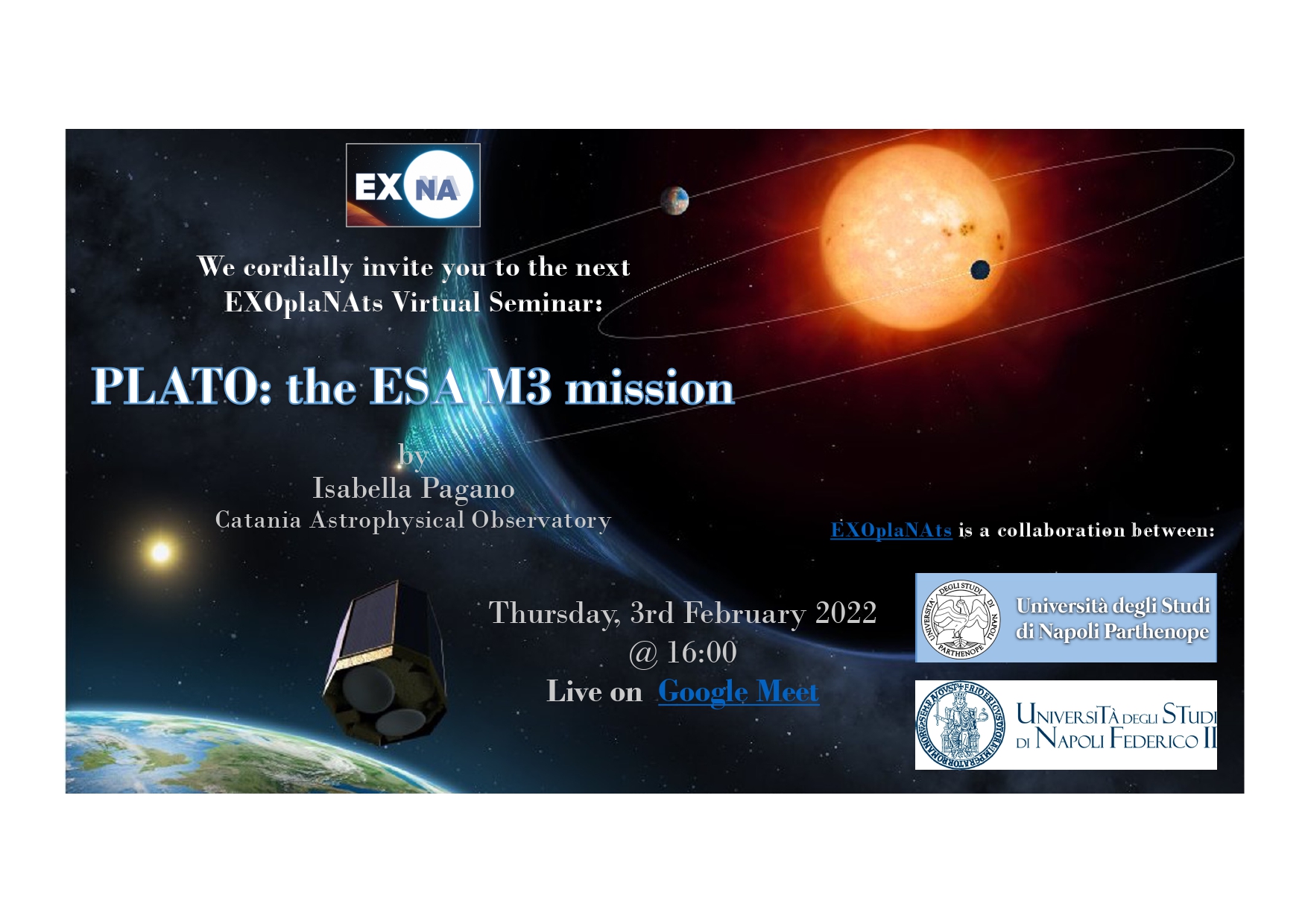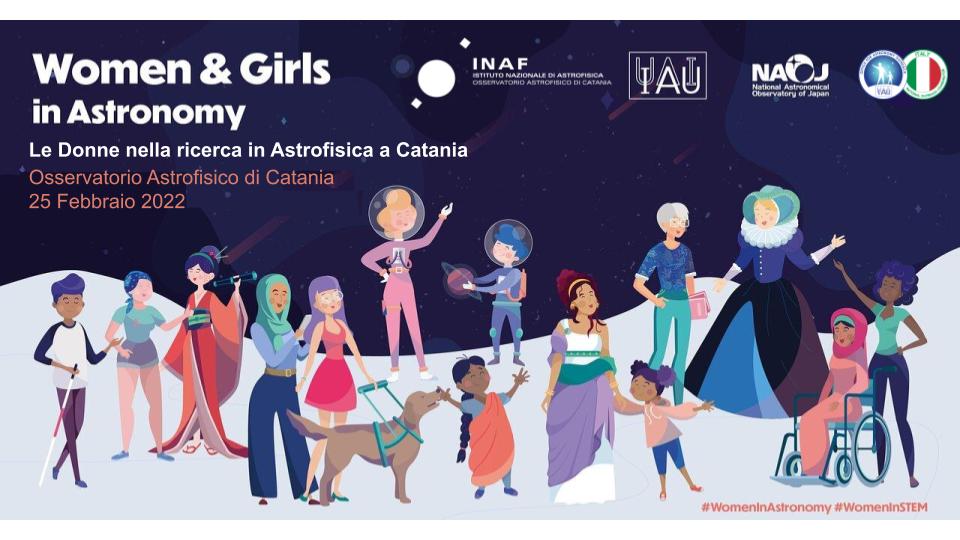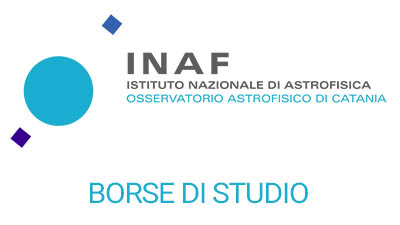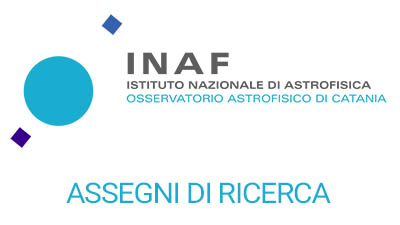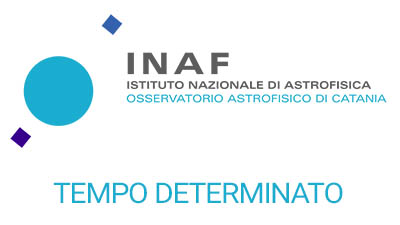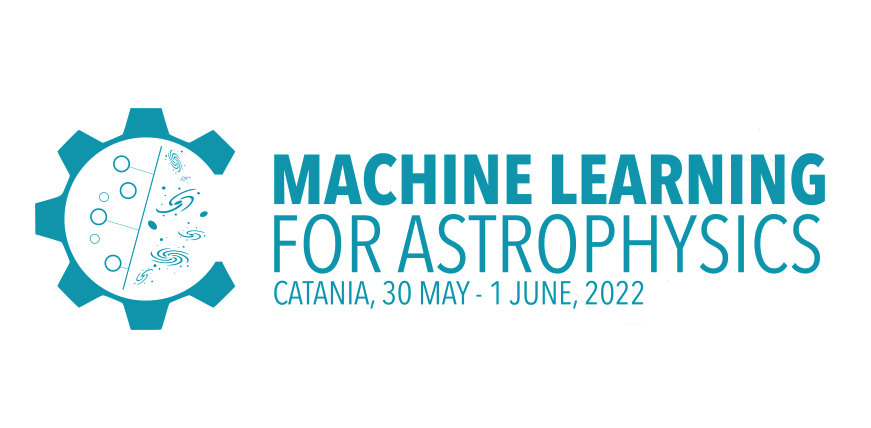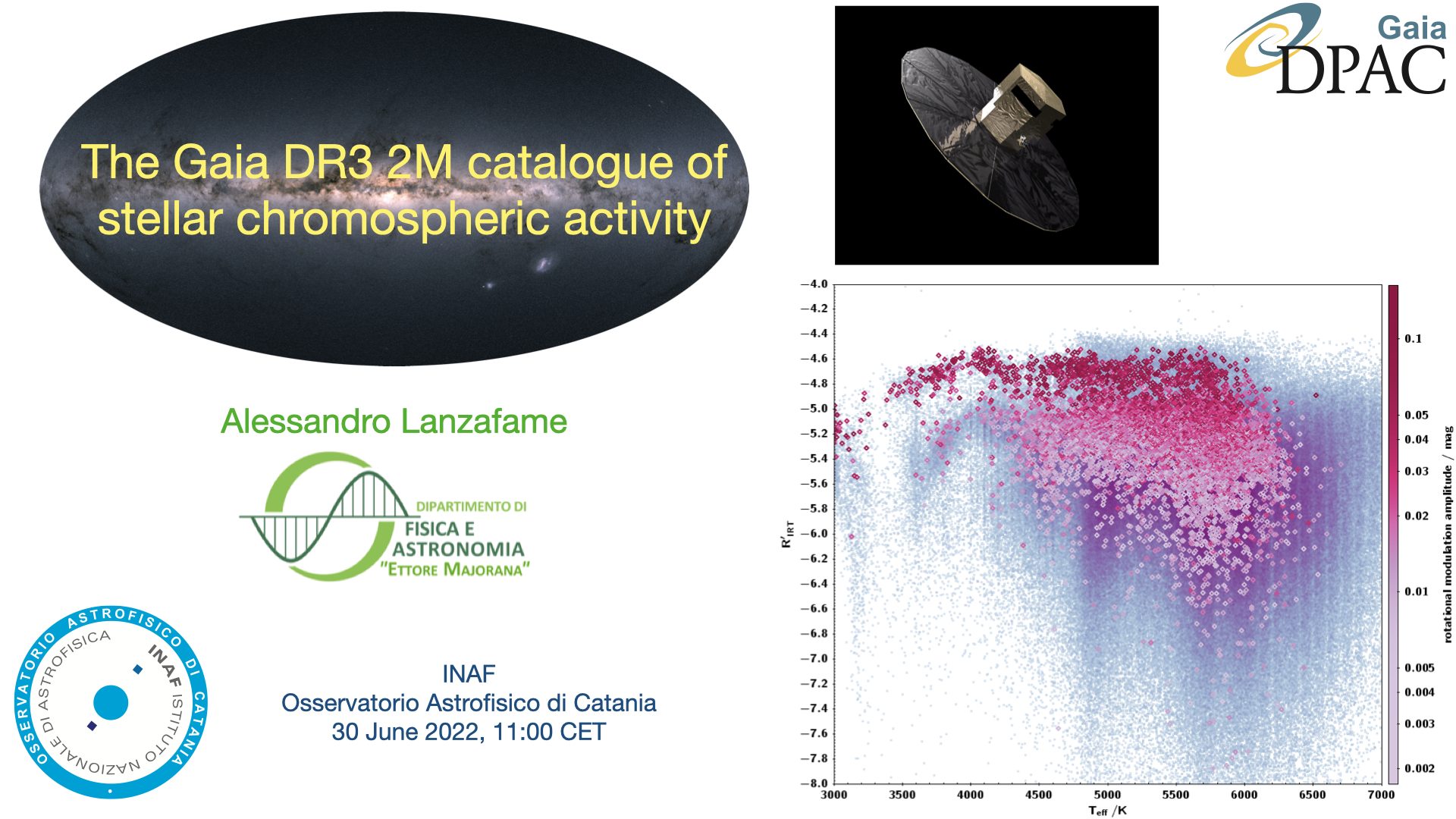PLATO: The ESA M3 Mission
PLAnetary Transits and Oscillations of stars (PLATO) is the 3rd medium-size (M3) mission in the ESA Cosmic Vision 2015-2025 program. With its 26 all-refractive telescopes onboard, PLATO secures a FoV of more than 2100 square degrees, allowing us to search for Earth-sized planets in the habitable zone of solar-type bright stars.
The selected range of target luminosities is key to allow follow-up investigations on the detected exo-planetary systems, from RV follow-up, to asteroseismology studies that provide increased precision on the mass of discovered planets. Moreover, bright stellar targets are best cases when studying atmospheres of transiting planets by spectroscopy from space (JWST, Ariel) and from the ground (e.g., Espresso@VLT, Hires@ELT). PLATO is planned for a launch to L2 at the end of 2026.
I will focus my talk on some of the PLATO science cases, and will give an overview on how the instrument and the mission work.
